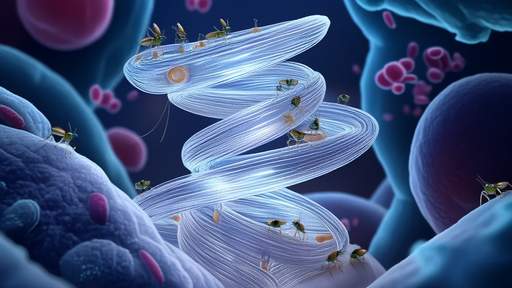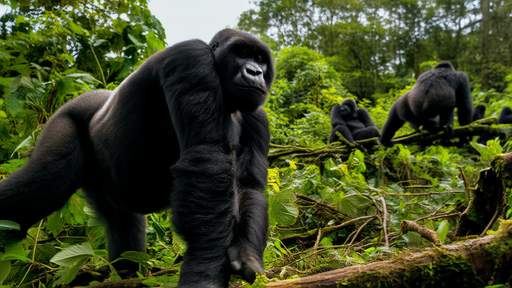In the annals of meteorological history, few projects have captured the imagination and controversy quite like Project Stormfury. Launched with the ambitious goal of weakening or diverting hurricanes, this decades-long endeavor left a mixed legacy of scientific discovery, technological innovation, and unresolved questions. As we delve into the story of Project Stormfury, we explore not only what it achieved but also what it tells us about humanity's attempts to control nature.
The Origins of Project Stormfury
The idea of weather modification emerged in the post-World War Two era, a time of boundless optimism for scientific progress. The successful detonation of atomic bombs in Hiroshima and Nagasaki led to widespread speculation about the potential for constructive uses of atomic energy. This optimism extended to the realm of weather control, with some even suggesting that nuclear weapons could be used to divert hurricanes away from populated areas.
One of the earliest attempts at weather modification was Project Cirrus, which aimed to use cloud seeding to influence hurricanes. In 1947, scientists dropped dry ice into a hurricane off the coast of Florida, hoping to induce changes in the storm's structure. While initial results seemed promising, the hurricane unexpectedly changed course and caused significant damage in Savannah, Georgia. This incident cast a shadow over the project, leading to public skepticism and scientific debate.
The Launch of Project Stormfury
Despite the setbacks of Project Cirrus, the US military remained interested in weather modification, particularly as the Vietnam War escalated. Classified missions, such as Operation Popeye, aimed to use cloud seeding to disrupt enemy supply lines. In this context, Project Stormfury was launched in 1962 with the goal of modifying hurricanes to reduce their intensity or divert their paths.
The project's hypothesis was based on the idea that seeding the area just outside the hurricane's eyewall with silver iodide could cause the formation of a second eyewall. This new eyewall would compete with the original, potentially slowing the hurricane's speed. The first major test of this theory came in 1961 with Hurricane Esther. After seeding, scientists observed a weakening of the eyewall, leading them to declare the experiment a success.
The Challenges and Controversies
Despite initial successes, Project Stormfury faced numerous challenges. One of the most significant was the stringent set of requirements for modifying hurricanes. To avoid the controversy of Project Cirrus, Stormfury was restricted to a specific experimental area over the open Atlantic, far from populated regions. This limitation meant that many hurricanes were unsuitable for seeding, leading to long periods of inactivity.
Another major challenge was the scientific basis of the project itself. As research progressed, it became clear that hurricanes were far more complex than initially thought. The presence of supercooled water, which was believed to be essential for successful seeding, was found to be less prevalent than expected. Additionally, the spontaneous formation of multiple eyewalls in some hurricanes suggested that the observed changes might be natural rather than induced by seeding.
The Decline and End of Project Stormfury
By the late 1960s, the scientific community began to question the feasibility of hurricane modification. The lack of consistent results and the growing understanding of hurricane dynamics led to increased skepticism. The final blow came in 1983 when the National Oceanic and Atmospheric Administration (NOAA) decided to end the project. The final evaluation concluded that the expected results of seeding were often indistinguishable from naturally occurring intensity changes.
The Legacy of Project Stormfury
While Project Stormfury did not achieve its ambitious goals, it left a lasting legacy in the field of meteorology. The data gathered during the project provided valuable insights into hurricane structure and behavior, leading to significant improvements in forecasting accuracy. Instruments developed for Stormfury continue to be used today, and the project's funding helped advance the field of meteorology.
For some, like Joe Golden, a former Stormfury participant, the project's end was premature. Golden has continued to advocate for hurricane modification, proposing new approaches such as using salt aerosols for seeding. However, others, like Hugh Willoughby, believe that the project's termination was justified. "The science didn't work out," Willoughby said, emphasizing the immense energy of hurricanes and the challenges of controlling them.
The Future of Hurricane Modification
The story of Project Stormfury raises important questions about the limits of human intervention in natural processes. While the project's ambitions were admirable, the realities of hurricane dynamics and the complexities of weather systems proved to be insurmountable. Today, the focus has shifted from modifying hurricanes to improving our ability to predict and prepare for them.
As climate change increases the frequency and intensity of hurricanes, the need for effective mitigation strategies remains urgent. While the dream of taming these powerful storms may never be realized, the lessons learned from Project Stormfury continue to inform our understanding of hurricanes and guide future research.
Project Stormfury serves as a reminder of both the potential and the limitations of scientific progress. It reminds us that while we can strive to understand and influence nature, some forces may always remain beyond our control.

By Daniel Scott/Jun 6, 2025

By John Smith/Jun 6, 2025

By Daniel Scott/Jun 6, 2025

By Emma Thompson/Jun 6, 2025

By Sophia Lewis/Jun 6, 2025

By Olivia Reed/Jun 6, 2025

By Joshua Howard/Jun 6, 2025

By David Anderson/Jun 6, 2025

By Emma Thompson/Jun 6, 2025

By Emily Johnson/Jun 6, 2025

By Samuel Cooper/Jun 6, 2025

By Emily Johnson/Jun 6, 2025

By Sophia Lewis/Jun 6, 2025

By Jessica Lee/Jun 6, 2025